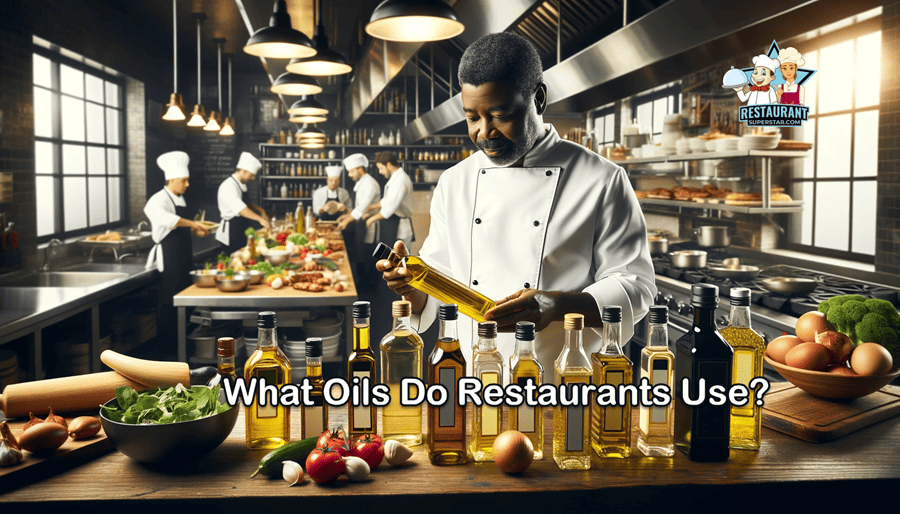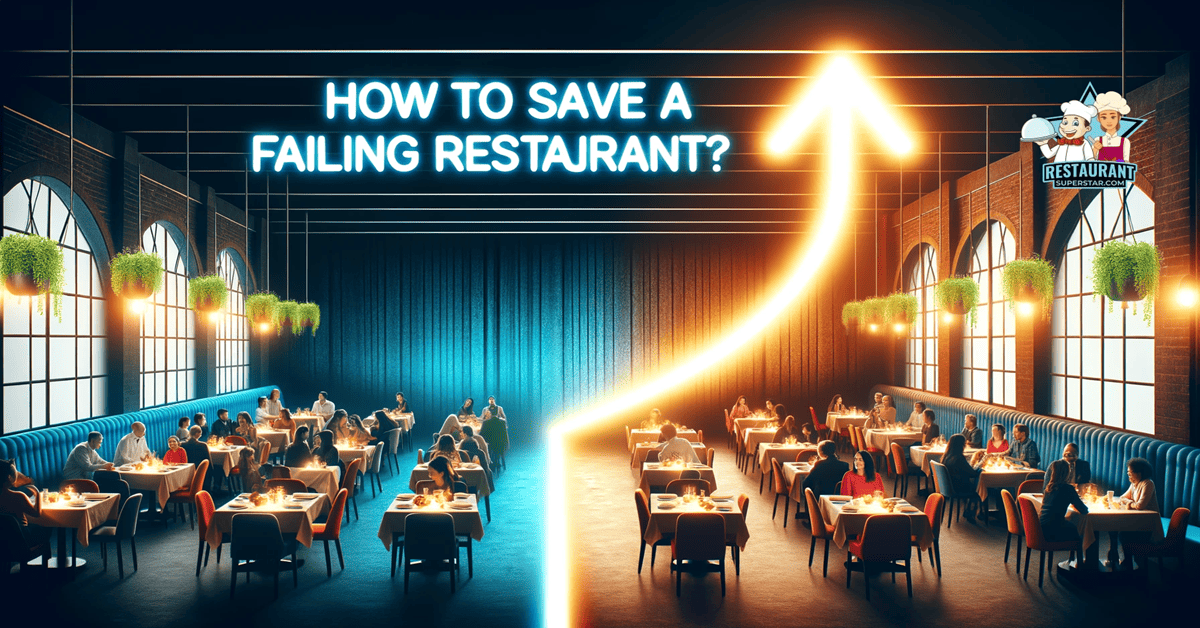How Often Are Restaurants Inspected: Latest Update
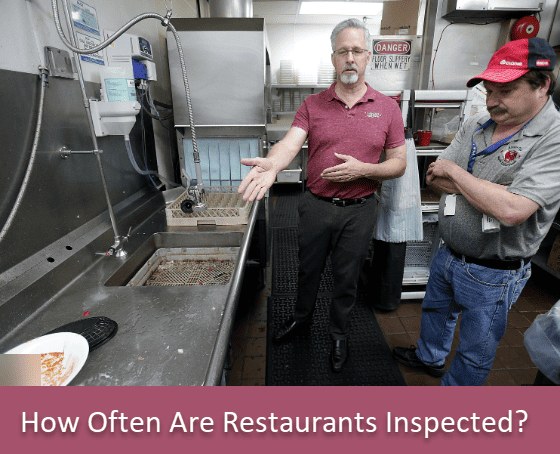
You are in the right place if you’re wondering, “How often are restaurants inspected?” This article will cover this and other important questions that restaurant owners frequently confront.
Hello, fellow restaurateurs,
It’s Jeff here, a seasoned restaurant consultant residing under the sunny skies of Florida. Throughout my journey, I’ve worn many hats, from being a passionate cook to managing restaurants and now consulting to help folks like you thrive in this dynamic industry.
During this time, I’ve seen firsthand the pivotal role of regular inspections in maintaining a restaurant’s quality and safety standards.
Now, if you are like many of the restaurant owners I’ve met, you probably have a flurry of questions buzzing in your mind about restaurant inspections.
Questions like “How detailed are these inspections?” or “What are the criteria for the inspections?” are quite common, and rightfully so.
But before we dive into the nitty-gritty, let’s address the burning question that brought you here.
How Often Are Restaurants Inspected?
How Often Are Restaurants Inspected? Restaurant inspections are periodic check-ins by local officials to ensure that restaurants run a safe and sanitary operation for their guests. The frequency of inspections may vary depending on the location, the type of restaurant, and the risk factors involved in food preparation and handling.
According to the FDA, domestic high-risk facilities are inspected at least once every three years, and non-high-risk facilities are inspected at least once every five years.
However, this can differ significantly depending on the specific regulations of your locale. In some bustling cities like New York City, the pace is brisk with annual inspections, offering restaurant owners a yearly benchmark to meet or exceed.
Meanwhile, the scene is a bit different on the West Coast; in Los Angeles, establishments are under scrutiny up to three times a year.
In our neck of the woods here in Florida, restaurant inspection frequency is also influenced by various factors such as the complexity of the menu, the volume of food handled, and the population served.
For instance, establishments that handle complex menus with many food items tend to undergo more frequent evaluations, ranging from one to three inspections yearly.
It’s paramount for restaurant owners to keep abreast of the specific guidelines and frequencies dictated by their local health departments.
This helps maintain the restaurant health code and ensures a seamless operation that guarantees both safety and satisfaction for your clientele.
The Importance of Regular Inspections in Restaurants
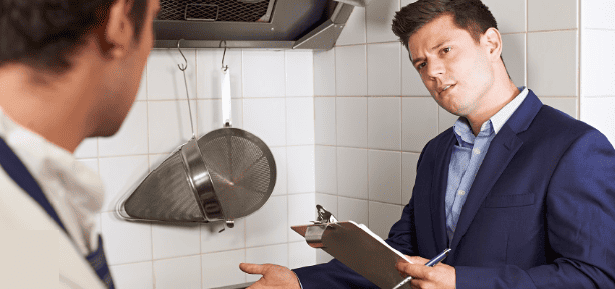
Now, diving right into the matter, let’s talk about why regular inspections are a cornerstone in the restaurant business. Having been around the block a few times, I’ve seen these inspections not as a hurdle but as a vital tool in helping us maintain and elevate our standards.
Let’s break down why these checks are so vital, shall we?
Safety Protocols in Restaurants
In my sunny home state of Florida, and truly everywhere, safety is paramount. The words “safety protocols” might sound stiff and formal, but trust me, they are your best friends in this business.
Think of them as the unsung heroes in the backdrop, working tirelessly to ensure that every dining experience at your restaurant is delightful and safe.
From my experience, it’s often the little things that matter. A well-placed fire extinguisher, a non-slip mat in just the right spot, and clear evacuation plans are the subtle yet powerful notes in the symphony of safety protocols in restaurants.
Believe it or not, these protocols aren’t just guidelines; they reflect your restaurant’s commitment to safeguarding your customers and reputation.
Protecting Customer Health and Safety
Now, let’s talk about something that’s always been close to my heart – safeguarding the health and well-being of everyone who walks through our doors. Being in the industry for years, I’ve seen firsthand how a lapse in maintaining standards can lead to regrettable and preventable incidents.
From personal observations, I can tell you that the adage “prevention is better than cure” holds in our business. Regular inspections act as a beacon, guiding us to ensure we are always on the right path, protecting customer health and safety with utmost diligence.
These checks help us spot potential issues before they escalate, allowing us to maintain a clean bill of health, literally and figuratively!
Significance of Food Hygiene Rating
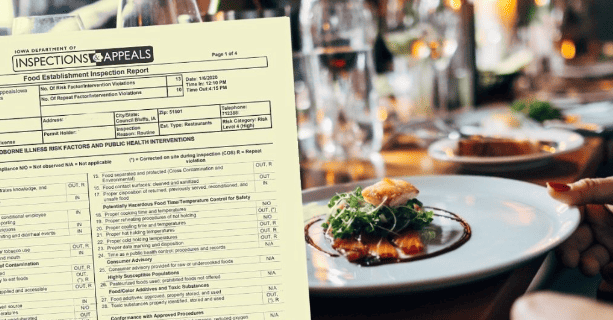
Now, onto a topic often buzzing in the restaurant community – the much-talked-about food hygiene rating. In my years as a consultant, I’ve seen restaurant owners beam with pride at a high rating, and rightly so. This rating isn’t just a badge of honor; it’s a testament to the hard work and dedication you put into your establishment.
But let’s take a step back and consider what this rating truly signifies. It’s not just about bragging rights but a clear, visual representation of your adherence to food safety regulations and hygiene standards. A stellar rating is essentially a beacon, signaling your customers that they can dine confidently, knowing that their well-being is your top priority.
In the grand scheme of things, these ratings play a pivotal role in building and maintaining the trust of your patrons. A high rating often translates to customer loyalty, which we cherish deeply in this industry.
So, as someone who has lived and breathed the restaurant business, I encourage you to embrace these inspections, not with trepidation, but with the eagerness to showcase the level of commitment and care you invest in your restaurant daily.
After all, these inspections are not just about ticking boxes but about fostering a culture of safety, hygiene, and excellence that resonates with every guest who enters your establishment.
What to Expect During Health Department Restaurant Inspections
I remember my early days in the restaurant scene, being slightly on edge when the topic of inspections came up. But after navigating countless inspections as a restaurant manager and consultant, I’ve picked up some wisdom I’d love to share with you.
Inspection Criteria for Restaurants
Firstly, let’s decode the mystery around the inspection criteria. While I’ve been mostly around Florida, many fundamental principles are universal. Here’s a rough breakdown of what inspectors typically look for:
- Kitchen Cleanliness and Equipment Maintenance: This one’s pretty straightforward. Your kitchen should be spotless, and equipment should be in good working order.
- Food Storage and Handling: Inspectors monitor how food is stored – ensuring raw and cooked items are properly separated, and the storage temperatures are just right.
- Employee Hygiene and Practices: Are your chefs wearing hairnets? Are hands being washed as often as they should? These practices make a huge difference.
- Restroom Cleanliness: It might surprise some, but restrooms tell inspectors a lot about the restaurant’s overall hygiene.
- Waste Disposal: This ensures that waste is disposed of properly and sanitary.
While this isn’t an exhaustive list, it gives you a pretty good idea of the general criteria. No matter how small, every detail can play a part in the bigger picture.
Health Inspection Report
Now, post-inspection, you’ll typically receive a health inspection report. I’ve seen many of these in my time, and they’re like a report card for your establishment.
They provide detailed feedback on areas where you excelled and areas needing improvement. This document is invaluable.
It’s a roadmap, pointing out exactly where to focus your energies to achieve higher standards. Remember, it’s not about being defensive; it’s about continuously striving for better.
Inspection Grading System
And then, there’s the grading. Ah, the suspense of waiting for that grade! Think of it as a school report card but for your restaurant. While systems may vary slightly across different regions, the concept remains the same. Grades reflect the overall safety and hygiene of your restaurant, often categorized into:
- A Grade: Excellent conditions with very minor or no violations.
- B Grade: Good overall, but with some areas that need attention.
- C Grade (and below): Several violations that require immediate action.
Earning an A grade is not just an achievement; it’s a testament to your dedication to maintaining stellar standards in your establishment.
But if you ever find yourself with a lower grade, don’t despair. See it as a learning opportunity, a nudge to reassess and elevate your game.
Having been in your shoes, I genuinely believe that preparation, diligence, and a genuine commitment to excellence make these inspections a breeze.
They might seem daunting at first, but with time and experience, you’ll come to see them as I do – as an opportunity to shine and showcase the amazing work you do daily.
Navigating the Landscape of Restaurant Inspections
After years of riding the waves in the restaurant industry, I’ve gained valuable insights into navigating the somewhat complex landscape of restaurant inspections. So, please take a seat, and let’s embark on this journey together, exploring the intricacies easily and confidently.
How Often are Restaurants Inspected?
Here we come to the million-dollar question, “How often are restaurants inspected?” It’s a query that seems to buzz in the minds of seasoned and new restaurant owners. It’s a pertinent question because knowing the frequency of these inspections can aid you in always being prepared.
In my experience, the frequency of inspections can vary quite a bit, largely depending on the location and the type of establishment you run.
Generally speaking, high-risk facilities are often on a tighter schedule, with inspections happening at least once every three years.
On the other hand, non-high-risk establishments might see an inspector once every five years. However, these frequencies vary greatly from state to state and sometimes city to city.
Based in Florida, I’ve noted that inspections here tend to follow a somewhat regular pattern, giving establishments a fair timeframe to prepare and ensuring everything is up to snuff. But regardless of the official schedule, it’s always prudent to operate as if an inspection could happen at any time – because sometimes, they can!
Differentiating Between Annual Restaurant Inspections and Unannounced Restaurant Inspections
As we sail further, it’s crucial to understand the subtle differences between annual restaurant inspections and those unannounced visits that can catch you off-guard.
Annual inspections are like regular health check-ups; they are planned, and you know they are coming. These inspections allow you to showcase the sterling work you and your team have done throughout the year, maintaining hygiene standards and complying with health codes.
Now, the unannounced inspections are a different beast altogether. They can truly test your mettle as a restaurant owner. From what I’ve gathered over the years, these surprise visits are designed to give the inspectors a genuine snapshot of the daily operations of your establishment. It’s an opportunity to show that your restaurant maintains high standards during the scheduled inspections and every day.
Role of Local Health Department Inspections
Before we wrap up, let’s take a moment to appreciate the role played by our local health departments in these inspections. These folks have a critical mission: ensuring every restaurant operates under sanitary conditions, offering patrons clean and safe dining experiences.
Having interacted with many health inspectors over the years, I can tell you that their guidance can be invaluable. They are there not just to evaluate but to educate, helping restaurant owners to understand and implement the best practices in food safety regulations and preventive measures in food handling.
Hey, to all of you reading this, I want to share a friendly advice: embrace these inspections with an open heart and mind.
They’re fantastic opportunities to learn, grow, and relentlessly pursue excellence. Remember that a clean, safe, hygienic restaurant creates the perfect foundation for a thriving business and a loyal customer base.
A Closer Look at Restaurant Health Code Compliance
You know what? I’ve realized that grasping and following the restaurant health code isn’t just a box to tick; it’s a game-changer for success. So, let’s dive deeper into this crucial aspect together, shall we?
Importance of Adhering to the Restaurant Health Code
Let me start by emphasizing the importance of sticking to the established health codes. Not only does it protect your business from any legal ramifications, but it also safeguards the trust your customers have in your establishment.
I can’t stress enough how a positive food hygiene rating can bolster your restaurant’s reputation.
You know, I learned this the hard way in my early days. A slight overlook on the temperature controls led to a hiccup in an inspection.
But it was a blessing in disguise; it served as a wake-up call, steering us towards a journey of uncompromised quality and safety.
Compliance with Health Codes
Now, navigating the labyrinthine health codes might seem daunting at first. But fret not, and it’s all about adopting a proactive approach. Here are a few golden rules I always adhere to, and I recommend you do, too:
- Maintaining Impeccable Cleanliness: This is the cornerstone. A clean kitchen is an inspector’s delight and a haven for culinary creativity.
- Regular Staff Training: Ensuring your team is well-educated on the latest health and safety regulations is half the battle won.
- Proper Food Storage: This is a seemingly simple task, but it makes all the difference in maintaining the freshness and quality of your ingredients.
- Personal Hygiene: A disciplined approach to personal hygiene among staff can prevent numerous food safety issues.
Food Safety Regulations
Diving into the world of food safety regulations is like an ever-evolving organism, always adapting and changing to ensure the highest safety standards.
Being in Florida, I’ve witnessed firsthand how these regulations work harmoniously to ensure customer health and safety.
But remember, it’s not just about ticking boxes; it’s about fostering a culture of safety and hygiene that permeates every aspect of your business.
Adopting preventive measures in food handling and having a certified food protection manager at the helm can be your golden ticket to sailing through inspections with flying colors.
Preparing Your Restaurant for Inspections
I’m ready to dive into one of the most crucial phases in a restaurant’s lifecycle – getting ready for those all-important inspections.
Trust me, I’ve been through this countless times, and now I’m here to share my playbook with you, step by step.
So, let’s get to it, shall we?
Restaurant Inspection Checklist
Alright, folks, creating a restaurant inspection checklist has always been my secret weapon in ensuring I’m always a step ahead.
Trust me, having a well-structured checklist is like having a roadmap that guides you effortlessly through the intricate maze of restaurant inspections. Here’s a quick checklist that has never failed me:
- Documentation Ready: Ensure all necessary permits, licenses, and paperwork are up to date and readily accessible.
- Pest Control Measures: Regularly schedule pest control visits to avoid unwelcome guests.
- Emergency Protocols: Have clearly defined protocols, including proper signage and functional fire safety equipment.
Remember, a checklist is a living document. Keep it updated with insights and feedback from each inspection, refining it to perfection as you go along.
Kitchen Cleanliness and Maintaining Sanitary Conditions
Now, let’s talk about the heart of the restaurant – the kitchen. In my Florida journey, I have always maintained that a sparkling kitchen is a testament to a restaurant’s commitment to hygiene and quality.
Regular deep cleaning sessions to maintain kitchen cleanliness can work wonders, not just for inspections but for the overall morale of your team.
Also, I cannot stress enough the importance of maintaining sanitary conditions. Trust Jeff on this: a clean workspace is a fertile ground for culinary magic, fostering creativity while ensuring food safety regulations are met.
Make it a habit, a part of your restaurant’s culture, and see the difference it makes.
Hygiene and Safety Inspections Preparations
As we get closer to D-day, we must wear our socks for the hygiene and safety inspections. In my experience, one of the key elements here is to foster a culture where every team member is a vigilant custodian of cleanliness and safety.
- Hands-On Training: Regular training sessions where your team learns the nuances of maintaining hygiene standards can be a game-changer.
- Mock Inspections: Occasionally, conducting mock inspections helps keep the team on their toes, always ready for the real deal.
- Feedback Loop: Encourage a feedback loop where your team can share their observations and suggestions for improvements, creating a collective responsibility towards maintaining high standards.
Understanding the Food Establishment Inspection Process
Today, get ready for an exclusive behind-the-scenes look into the world of food establishment inspections. Please sit back, relax, and join me as I spill the beans, drawing from my rich tapestry of experiences. Trust me, you won’t want to miss these hidden gems.
Ready? Let’s go.
Food Establishment Inspection Procedures
Embarking on the journey of understanding food establishment inspection procedures can be akin to unraveling a complex puzzle.
But worry not, for Jeff is here to simplify it for you.
Picture this: The health inspector walks in on a beautiful sunny day in Florida. You’re not just prepared; you’re confident because you understand the process inside out.
Firstly, inspectors focus on critical areas such as food handling practices, temperature controls, and cleanliness.
It’s essential to ensure your food is stored at the correct temperatures to prevent bacterial growth. You also want to ensure that your staff adheres to high standards of personal hygiene – a practice I always emphasize in my consultancy sessions.
Moreover, remember that inspectors are there to work with you, not against you. They are there to help you maintain the highest safety and hygiene standards, so cooperate fully and learn from their feedback.
Importance of Following Inspection Guidelines
Now, stepping into my shoes as a seasoned consultant, I cannot emphasize enough the importance of following inspection guidelines.
It’s akin to laying a strong foundation for a building; it ensures the safety and well-being of everyone involved.
Following the guidelines is not just about meeting legal requirements. It’s about building a legacy of trust with your patrons, a commitment to offering them nothing but the best.
So, see these guidelines as your best friends, guiding you in carving out a niche of excellence in the restaurant business.
The Role of a Certified Food Protection Manager
Transitioning into a serious note here, having a Certified Food Protection Manager at the helm is not just a recommendation but a necessity in most places. And from my personal view, it’s a boon for your establishment.
This professional plays a pivotal role in ensuring the smooth sailing of your establishment through inspections.
They are trained to understand the nuances of food safety, hygiene standards, and regulatory compliance, essentially being the guardians of your restaurant’s reputation.
I’ve witnessed how having a dedicated person looking over these aspects can transform restaurant safety protocols, fostering a space where quality and safety walk hand in hand.
Tips to Ace Your Restaurant Inspections Every Time
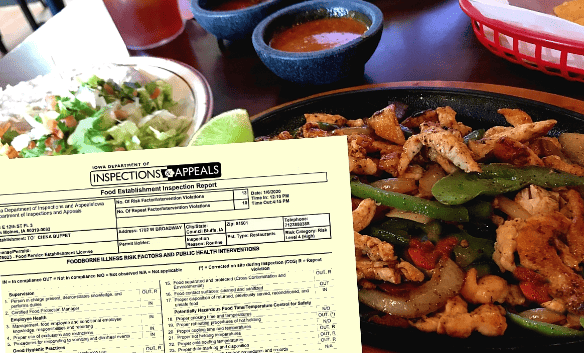
Listen up, folks. Today, I’ve got some golden nuggets – game-changing tips that have helped me and countless restaurant owners sail through inspections like pros. Buckle up because we’re about to ace this inspection rodeo together. Let’s make those inspectors go green with envy.
Implementing Preventive Measures in Food Handling
In my time meandering through the wonderful world of restaurants in Florida, I have realized that prevention is better than cure, especially regarding food handling. Imagine a scenario where your kitchen is a symphony, and each member plays a part in creating a harmonious melody of hygiene and safety.
- Cross-Contamination: Avoid cross-contamination by using separate cutting boards and utensils for different types of food.
- Temperature Control: Maintain a strict vigil on temperature controls to ensure food is stored and cooked at safe temperatures.
- Hand Washing Stations: Implement regular hand-washing protocols and ensure the stations are always well-equipped.
Implementing these preventive measures means that you are not just meeting the basic “how often are restaurants inspected” criteria but are going above and beyond to guarantee safety and quality.
Addressing Potential Code Violations in Restaurants Proactively
Code violations are those pesky hurdles in our path to excellence. But fear not, for I’m here to reveal the secret: They can be managed proactively, transforming them into mere blips on the radar.
Here in sunny Florida, I’ve long preached to restaurant owners the mantra of staying ahead, nipping potential pitfalls before they can mar the journey to success. So, let’s tackle those obstacles head-on and pave the way for a flourishing business.
- Regular Training: Conduct regular training sessions to keep your team updated on the latest guidelines and safety protocols in restaurants.
- Maintenance: Ensure regular maintenance of equipment and infrastructure to prevent unforeseen violations.
- Self-Inspections: Carry out self-inspections periodically to identify and rectify potential areas of concern before the official inspection day.
Upholding High Hygiene Standards
And now, onto the crown jewel of restaurant management – upholding high hygiene standards. I firmly believe that maintaining a pristine environment is not just about acing inspections but about fostering a space where culinary dreams come to life.
- Cleanliness: Regular deep cleaning sessions to maintain a gleaming kitchen and dining area.
- Waste Management: Implement efficient waste management practices to prevent pests and maintain sanitary conditions.
- Continuous Improvement: Encourage a culture of continuous improvement where feedback is valued, and improvements are implemented swiftly.
Frequently Asked Questions – How Often Are Restaurants Inspected
How Often Do Restaurants Get Inspected?
Restaurants undergo inspections at varying frequencies, largely dependent on the types of food and beverages they offer. While the FDA generally mandates that inspections occur at least every six months, there might be exceptions. For instance, establishments that mainly deal in coffee sales or offer prepackaged foods might experience less frequent inspections, especially if they adhere to specific criteria set by the health department.
How Often Are Restaurants Inspected in the US?
In the United States, the frequency of restaurant inspections is determined by the FDA Food Safety Modernization Act, which stipulates that high-risk facilities must undergo inspections at least once every three years. Meanwhile, non-high-risk establishments must have inspections at least once every five years.
How Often Can a Local Health Inspector Enter Your Restaurant to Inspect You?
Local health inspectors usually conduct inspections randomly, roughly once every six months, although this can vary. Importantly, these inspections can happen at any time during the restaurant is operational days, and they are not announced in advance.
How Often Are Restaurants Inspected in Texas?
In Texas, restaurants are inspected by a licensed professional from the Texas Department of State Health Services approximately every six months to ensure health and safety standards compliance.
How Often Are Restaurants in Virginia Inspected?
Restaurants in Virginia undergo inspections one to four times a year. These inspections are conducted by the Virginia Department of Health (VDH), and the findings are documented in detailed reports, which can be accessed on their official website.
How Often Do NYC Restaurants Get Inspected?
Restaurants in New York City are subject to unannounced inspections at a minimum frequency of once a year. During these visits, inspectors assess compliance with city and state food safety regulations, noting any observed violations.
Are Local Health Departments Responsible for Restaurant Inspections?
Yes, local health departments are the primary agencies overseeing restaurant inspections, working to ensure that food businesses adhere to safe food handling procedures. While state health agencies apply the core functions of public health in their operations, the Department of Health and Human Services, a federal entity, also has a role in safeguarding the nation’s health.
Who Conducts Restaurant Inspections in Most States?
In most states, local public health departments are responsible for regularly inspecting businesses that serve food. This ensures restaurants and other retail outlets comply with safe food handling procedures.
Why Do Health Inspectors Look for a Clean Kitchen During Their Inspections?
Health inspectors emphasize kitchen cleanliness during their inspections to prevent the risk of contamination and food poisoning from occurring in your restaurant. Inspectors will be vigilant about identifying potential issues such as uncovered stored food and inappropriate containers, which can indicate a high risk for foodborne illnesses. Their primary goal is to safeguard the health and well-being of customers.
Personal Insights and Conclusion
As our culinary journey draws to a close today, I wanted to leave you with some heart-to-heart insights from my years as a restaurant consultant here in sunny Florida.
One of my most vivid memories is of a quaint little restaurant in Miami. Its owner, Rosa, was exceptionally passionate about her craft but was always anxious about inspection days.
The thought of “How often are restaurants inspected?” haunted her nights. I recall she confessed her fears to me one evening over Cuban coffee.
Together, we transformed her kitchen to ace inspections and truly honor the art of cooking. It was about compliance, love, passion, and respect for the culinary craft and her patrons.
The joy in her eyes after the next inspection, receiving commendation and zero violations, is a moment I cherish deeply.
Another time, I was in Tampa, working with Alex, a young restaurateur. His challenge? A string of minor but consistent code violations.
Together, we instilled a culture of continuous improvement in his team. Within a year, he went from just scraping through inspections to being held up as a beacon of hygiene and food safety in the community.
These stories are personal memories, and testaments of what passion combined with knowledge can achieve.
So, to all the brilliant restaurant owners, remember inspections aren’t just bureaucratic hurdles. They are opportunities. Opportunities to showcase your commitment to excellence, learn, grow, and ensure that every plate you serve manifests love and care.
Jeff Smith is a Restaurant Consultant with over 20 years of hospitality experience ranging from server to owner and general manager. He focuses on Restaurant POS technology as well as restaurant marketing. Check out our world-famous restaurant resources page for a comprehensive offering of hand-picked resources and tools to help your business. You can also check out some of our other restaurant business articles.

